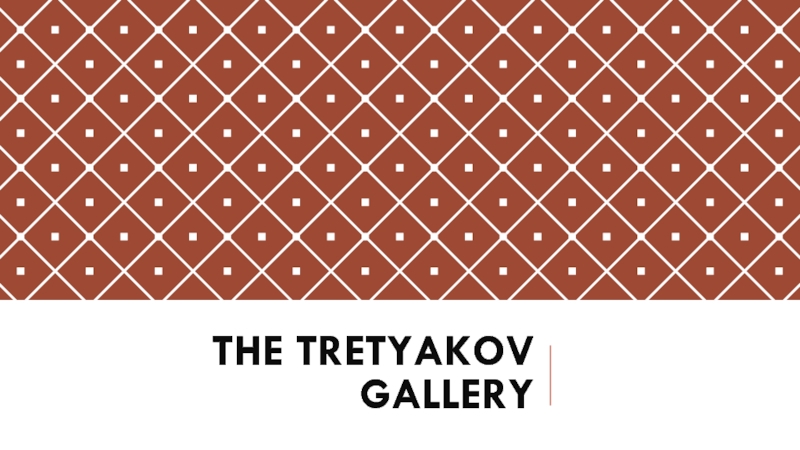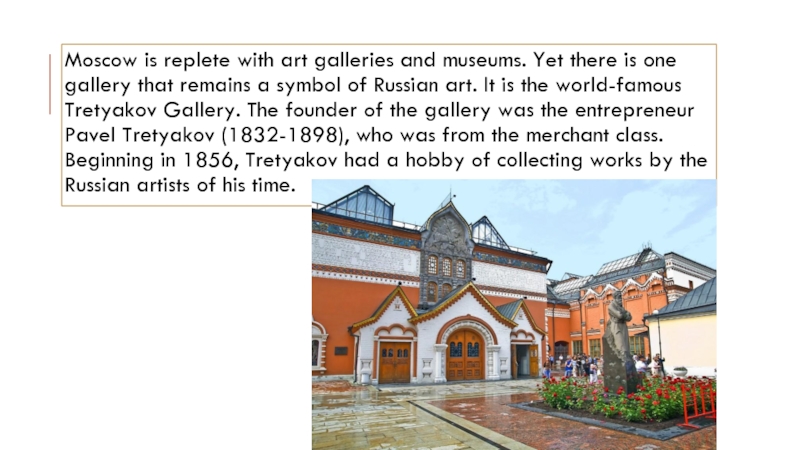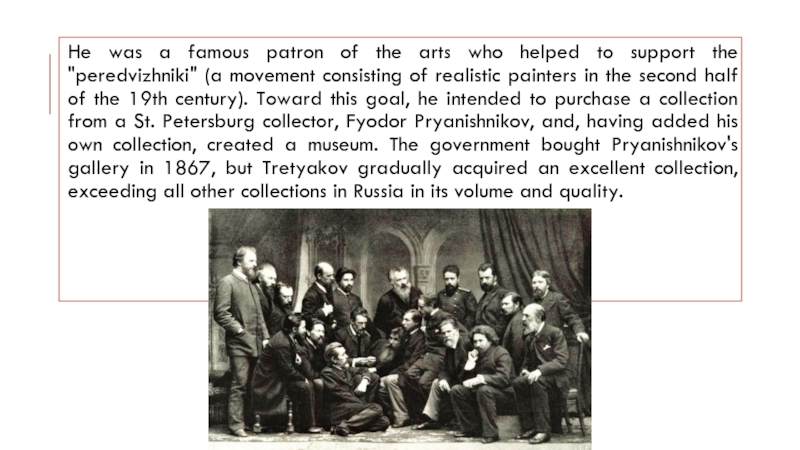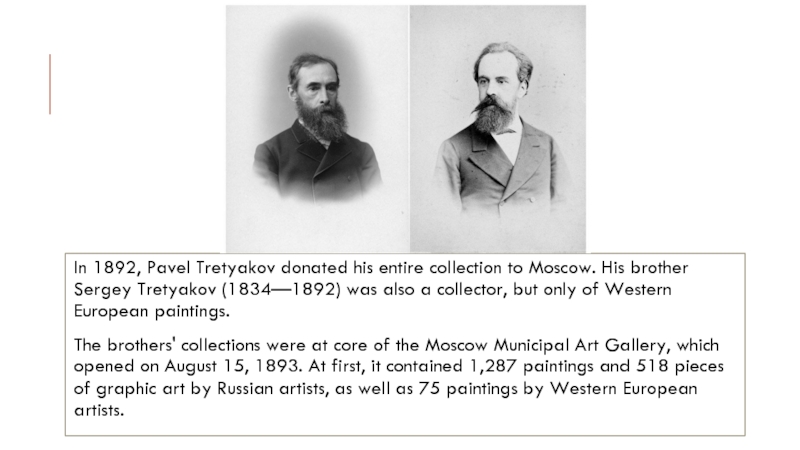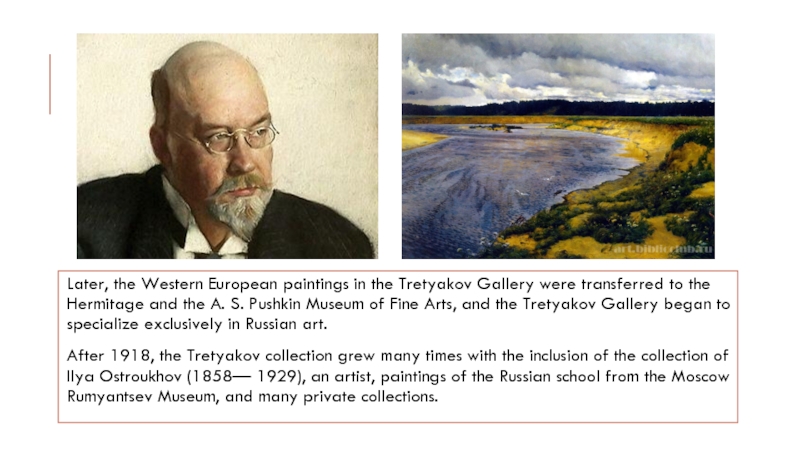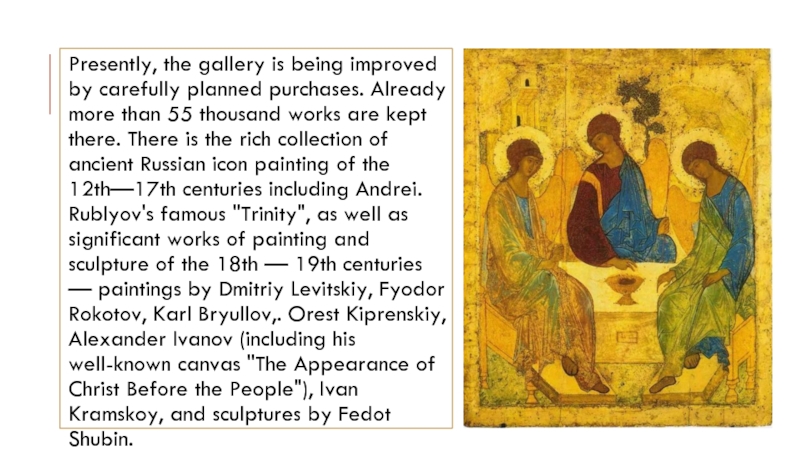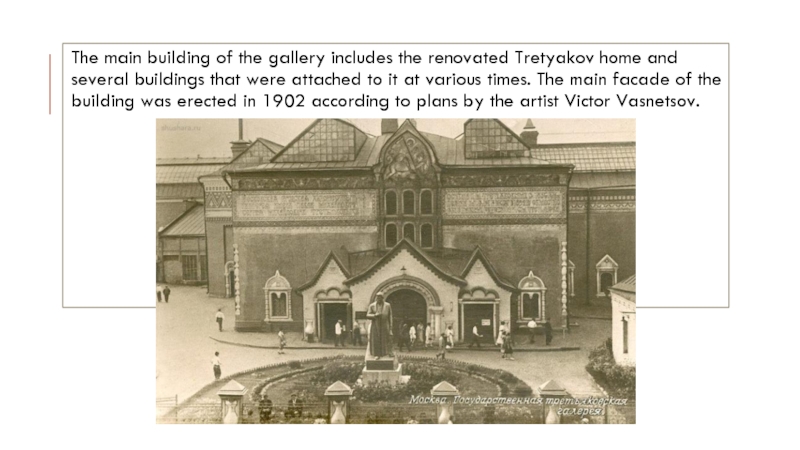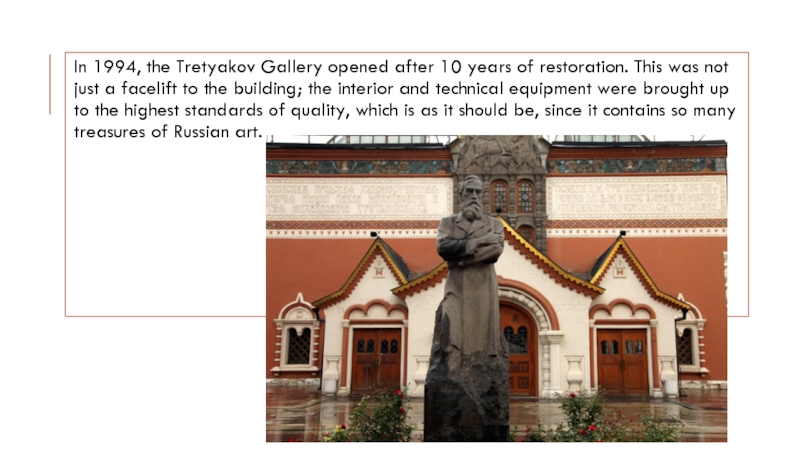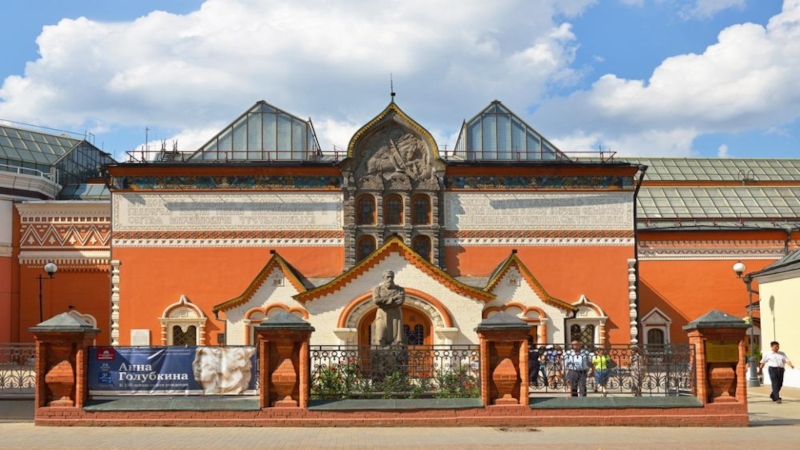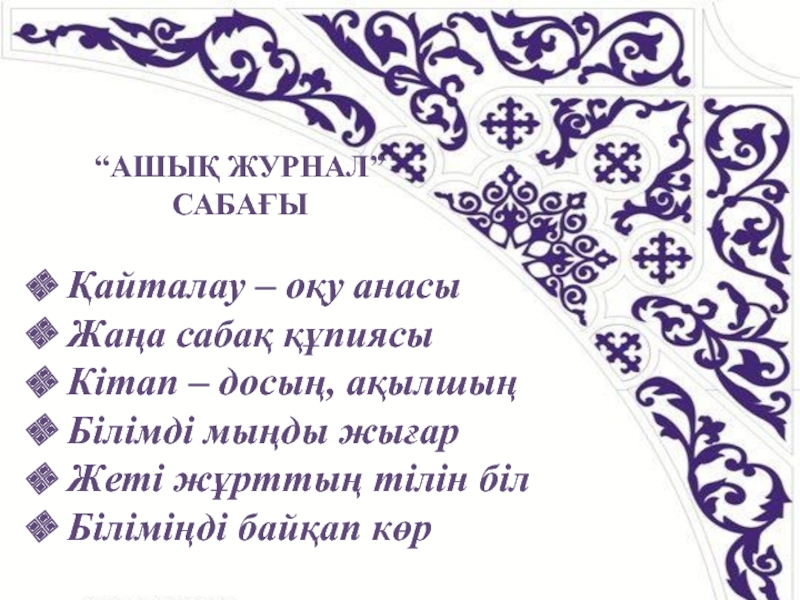- Главная
- Разное
- Образование
- Спорт
- Естествознание
- Природоведение
- Религиоведение
- Французский язык
- Черчение
- Английский язык
- Астрономия
- Алгебра
- Биология
- География
- Геометрия
- Детские презентации
- Информатика
- История
- Литература
- Математика
- Музыка
- МХК
- Немецкий язык
- ОБЖ
- Обществознание
- Окружающий мир
- Педагогика
- Русский язык
- Технология
- Физика
- Философия
- Химия
- Шаблоны, фоны, картинки для презентаций
- Экология
- Экономика
Презентация, доклад по английскому языку на тему The Tretyakov Gallery
Содержание
- 1. Презентация по английскому языку на тему The Tretyakov Gallery
- 2. Moscow is replete with art galleries and
- 3. He was a famous patron of the
- 4. In 1892, Pavel Tretyakov donated his entire
- 5. Later, the Western European paintings in the
- 6. Presently, the gallery is being improved by
- 7. The gallery has an excellent selection of
- 8. The main building of the gallery includes
- 9. In 1994, the Tretyakov Gallery opened after
- 10. Слайд 10
Moscow is replete with art galleries and museums. Yet there is one gallery that remains a symbol of Russian art. It is the world-famous Tretyakov Gallery. The founder of the gallery was the entrepreneur Pavel Tretyakov
Слайд 2Moscow is replete with art galleries and museums. Yet there is
one gallery that remains a symbol of Russian art. It is the world-famous Tretyakov Gallery. The founder of the gallery was the entrepreneur Pavel Tretyakov (1832-1898), who was from the merchant class. Beginning in 1856, Tretyakov had a hobby of collecting works by the Russian artists of his time.
Слайд 3He was a famous patron of the arts who helped to
support the "peredvizhniki" (a movement consisting of realistic painters in the second half of the 19th century). Toward this goal, he intended to purchase a collection from a St. Petersburg collector, Fyodor Pryanishnikov, and, having added his own collection, created a museum. The government bought Pryanishnikov's gallery in 1867, but Tretyakov gradually acquired an excellent collection, exceeding all other collections in Russia in its volume and quality.
Слайд 4In 1892, Pavel Tretyakov donated his entire collection to Moscow. His
brother Sergey Tretyakov (1834—1892) was also a collector, but only of Western European paintings.
The brothers' collections were at core of the Moscow Municipal Art Gallery, which opened on August 15, 1893. At first, it contained 1,287 paintings and 518 pieces of graphic art by Russian artists, as well as 75 paintings by Western European artists.
The brothers' collections were at core of the Moscow Municipal Art Gallery, which opened on August 15, 1893. At first, it contained 1,287 paintings and 518 pieces of graphic art by Russian artists, as well as 75 paintings by Western European artists.
Слайд 5Later, the Western European paintings in the Tretyakov Gallery were transferred
to the Hermitage and the A. S. Pushkin Museum of Fine Arts, and the Tretyakov Gallery began to specialize exclusively in Russian art.
After 1918, the Tretyakov collection grew many times with the inclusion of the collection of Ilya Ostroukhov (1858— 1929), an artist, paintings of the Russian school from the Moscow Rumyantsev Museum, and many private collections.
After 1918, the Tretyakov collection grew many times with the inclusion of the collection of Ilya Ostroukhov (1858— 1929), an artist, paintings of the Russian school from the Moscow Rumyantsev Museum, and many private collections.
Слайд 6Presently, the gallery is being improved by carefully planned purchases. Already
more than 55 thousand works are kept there. There is the rich collection of ancient Russian icon painting of the 12th—17th centuries including Andrei. Rublyov's famous "Trinity", as well as significant works of painting and sculpture of the 18th — 19th centuries — paintings by Dmitriy Levitskiy, Fyodor Rokotov, Karl Bryullov,. Orest Kiprenskiy, Alexander Ivanov (including his well-known canvas "The Appearance of Christ Before the People"), Ivan Kramskoy, and sculptures by Fedot Shubin.
Слайд 7The gallery has an excellent selection of the best works by
the "peredvizhniki": Ilya Repin (including "Ivan the Terrible and His Son Ivan"), Victor Vasnetsov, Ivan Shishkin, Vasiliy Surikov ("The Morning of the Strelets Execution"), Vasiliy Vereshchagin and others.
The blossoming of many areas of Russian art at the end of the 19th and the beginning of the 20th centuries is also well represented.
The blossoming of many areas of Russian art at the end of the 19th and the beginning of the 20th centuries is also well represented.
Слайд 8The main building of the gallery includes the renovated Tretyakov home
and several buildings that were attached to it at various times. The main facade of the building was erected in 1902 according to plans by the artist Victor Vasnetsov.
Слайд 9In 1994, the Tretyakov Gallery opened after 10 years of restoration.
This was not just a facelift to the building; the interior and technical equipment were brought up to the highest standards of quality, which is as it should be, since it contains so many treasures of Russian art.
